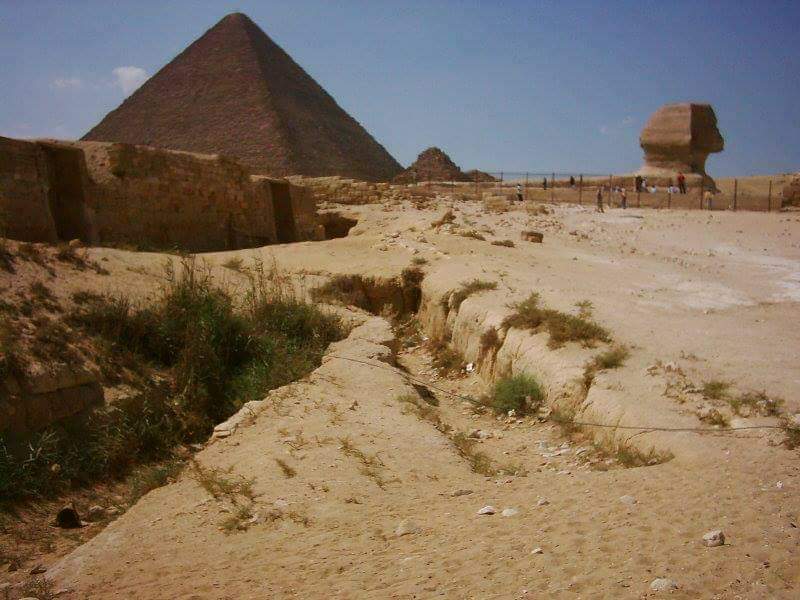While working on a dig to the north of Cairo, I had some time to spend at Giza and sought to explore the erosion hypothesis forwarded by JA West and Dr. Schoch.
My intention was to explore known 4th dynasty tombs within a geologically intact context with the Sphinx and compare any erosion patterns.
To my surprise, just south of the Sphinx itself by about 70m was a tomb of a 4th dynasty priest with a causeway dug into the same member of limestone as the top of the Sphinx enclosure. The tomb (G8960) belonged to Kaunisut, a 4th dynasty priest who lived during the construction of the pyramids. It therefore serves as a contemporary proxy by which erosion rates from this period can be measured.
It has patterns identical to the Sphinx enclosure. Fissures developed in the limestone which absorbed ground water, was exposed to flash flooding, and the salt-ridden limestone flaked off, producing a valley at fissure sources and rounding through flooding.
![]()
![]()
![]()
I believe this is strong evidence suggesting a 4th dynasty exposure for the enclosure. A predynastic date for the carving of the Sphinx is therefore unnecessary from a geological perspective.
Giza gets torrents of rain.
![]()
My intention was to explore known 4th dynasty tombs within a geologically intact context with the Sphinx and compare any erosion patterns.
To my surprise, just south of the Sphinx itself by about 70m was a tomb of a 4th dynasty priest with a causeway dug into the same member of limestone as the top of the Sphinx enclosure. The tomb (G8960) belonged to Kaunisut, a 4th dynasty priest who lived during the construction of the pyramids. It therefore serves as a contemporary proxy by which erosion rates from this period can be measured.
It has patterns identical to the Sphinx enclosure. Fissures developed in the limestone which absorbed ground water, was exposed to flash flooding, and the salt-ridden limestone flaked off, producing a valley at fissure sources and rounding through flooding.



I believe this is strong evidence suggesting a 4th dynasty exposure for the enclosure. A predynastic date for the carving of the Sphinx is therefore unnecessary from a geological perspective.
Giza gets torrents of rain.
